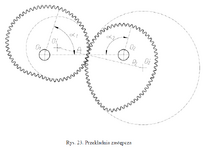Hello everyone. Mods, if you think there is a more appropriate forum for this question, please let me know. And thank you in advance to anyone who can provide some advice.
I’m working on developing a machine. This machine will have an output gear that will turn while the machine is in operation, and it will make one complete revolution per actuation of the machine. At about the 330° point in its rotation I need this output gear to turn a cam one complete revolution. The cam needs to be intermittent though. I can’t have it turning continuously along with the output gear. The cam needs to do nothing for almost the entire time until the output gear gets to about 330°. Then it will turn once, and just sit there again until the next cycle. Also, once the output gear gets to the point where it's time to turn the cam, I need that cam to turn as fast as practically possible.
So, the solution I came up with was to use a worm drive. The worm gear is mutilated with only a single tooth remaining, and the worm is offset so the single tooth on the worm gear will only mesh with a single turn on the worm. I attached a short animation with several angles to show what I’m talking about.
There are tons of mutilated gear examples I’ve seen, but very few with a worm drive, and none that I’ve seen with only a single tooth. So, this leads me to believe that maybe this isn’t the best solution, or it won’t work for some reason. Can you share your thoughts? How would you solve this problem? I’m not a mechanical engineer. Maybe there is a simpler solution. I just don’t know.
Thanks again.
View attachment WormGearExample.mp4
I’m working on developing a machine. This machine will have an output gear that will turn while the machine is in operation, and it will make one complete revolution per actuation of the machine. At about the 330° point in its rotation I need this output gear to turn a cam one complete revolution. The cam needs to be intermittent though. I can’t have it turning continuously along with the output gear. The cam needs to do nothing for almost the entire time until the output gear gets to about 330°. Then it will turn once, and just sit there again until the next cycle. Also, once the output gear gets to the point where it's time to turn the cam, I need that cam to turn as fast as practically possible.
So, the solution I came up with was to use a worm drive. The worm gear is mutilated with only a single tooth remaining, and the worm is offset so the single tooth on the worm gear will only mesh with a single turn on the worm. I attached a short animation with several angles to show what I’m talking about.
There are tons of mutilated gear examples I’ve seen, but very few with a worm drive, and none that I’ve seen with only a single tooth. So, this leads me to believe that maybe this isn’t the best solution, or it won’t work for some reason. Can you share your thoughts? How would you solve this problem? I’m not a mechanical engineer. Maybe there is a simpler solution. I just don’t know.
Thanks again.
View attachment WormGearExample.mp4


